Emily HalnonGHTC
Emily Halnon is a communications associate at GHTC.
In countries like Kenya, some of the most incredible global health research is taking place to develop new drugs, vaccines, diagnostics and other health products. In addition, previous research has lead to the roll-out of lifesaving health tools such as HIV and AIDS drugs, vaccines to protect children from pneumonia, and insecticide-treated bednets to prevent malaria. Last week, the GHTC hosted a photo reception that represented the people, both Kenyan and American, who are making new lifesaving health tools a reality, as well as the families benefitting from ongoing research and past research successes. The reception centered around two stories. One showed how lifesaving tools are making a difference in communities across Kenya. The second showed how current research is on the cusp of developing some of the most exciting new tools in global public health in recent years.
A historical commitment to research from the US government has led to the development of innovative health tools that are saving lives around the world. People worldwide have benefited from the development of critical medicines like antiretrovirals to treat HIV and AIDS and drugs to treat childhood killers like diarrhea, vaccines to protect infants from pneumonia and polio, and insecticide-treated bednets to prevent malaria. In Kenya, many individuals and families credit these valuable health tools with saving their lives and ensuring their children can have healthy and long futures. Researchers at agencies like the Centers for Disease Control and Prevention, the Department of Defense, and the US Agency for International Development are making a difference on the ground in Kenya by leading the development and delivery of drugs, vaccines, diagnostics, and other health products. With sustained support from the United States, countries like Kenya will continue to see the impact of these lifesaving health tools that are helping people abroad and right here at home.

Kisumu, Kenya: Calvin Lang'at, a nurse at Vihiga District Hospital, gives an infant an oral polio vaccine. Immunization campaigns have reduced polio rates by more than 99 percent worldwide, and the disease is now near eradication. Photo credit: PATH/Evelyn Hockstein

Kibera, Kenya: The Centers for Disease Control and Prevention use technologies to control the spread of infectious disease and to act as a warning system for the emergence of possible epidemics. Handheld PDAs—like the one health worker Joseph Thomas is using above—help officials conduct disease surveillance among 28,500 residents in Kibera. Disease surveillance can also help drive research for new health products, by alerting officials to large disease burdens and the need for new prevention and treatment options. Photo credit: PATH/Evelyn Hockstein
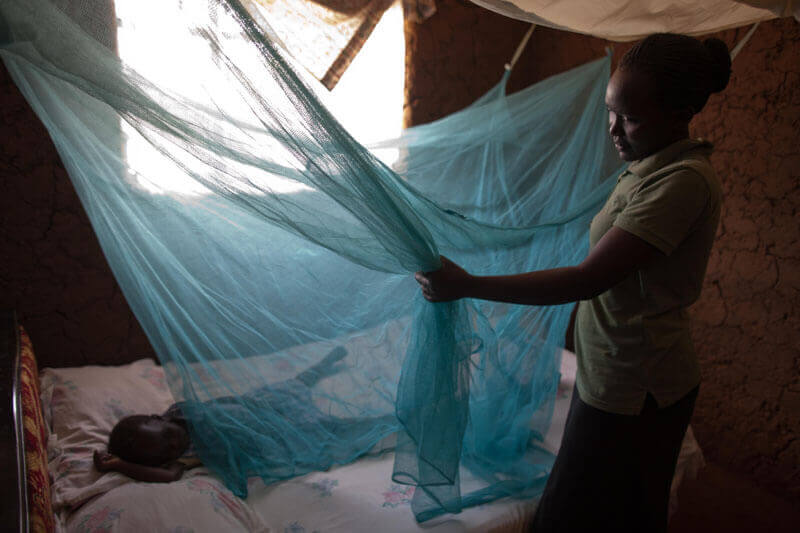
Kombewa, Kenya: Martha Omondi puts her daughter Mercy Gloria, who is three years old, under a mosquito net to take a nap. Insecticide-treated nets have prevented millions of children from contracting malaria in Africa. Photo credit: PATH/Evelyn Hockstein

Siaya, Kenya: Faith Oduor holds her daughter Brittany’s hand while she receives treatment for malaria at the Siaya District Hospital in western Kenya. Malaria treatments, including pediatric artemisinin therapies such as Coartem, help to save the lives of children like Brittany across Africa. Photo credit: PATH/Evelyn Hockstein

Elwesero, Kenya: Peter Lumumba, a father of six, was first diagnosed with HIV in 1987 and started antiretroviral treatment in 2006 through the Aids, Population, and Health Integrated Assistance (APHIA II) program. He said of his treatment, “I am now well. People are totally astonished … when we are telling people we are (HIV) positive, they will say, ‘No, you are lying.’ Without the research that led to this lifesaving medicine, I would have already died.” Photo credit: PATH/Evelyn Hockstein

Elwesero, Kenya: Peter Lumumba, pictured above with his son, was first diagnosed with HIV in 1987 and started antiretroviral treatment in 2006. Peter is open with his family about the fact that he is HIV-positive and is taking antiretroviral drugs. In the year 2000, Kenya had just a handful of HIV-positive people taking antiretroviral drugs. Today, the country has a half-million people on these drugs, which have saved many from an early death. Photo credit: PATH/Evelyn Hockstein

Vihiga, Kenya: Rister Kageha holds her daughter Sylvia Mboga, who is 14 months old, at the Vihiga District Hospital. Rister learned she was HIV-positive and was put on antiretrovirals one month before she gave birth to her daughter. Sylvia was given the antiretroviral nevirapine after birth and is HIV negative. Rister accessed drugs through the Aids, Population, and Health Integrated Assistance (APHIA II) program, which provides comprehensive health care and prevention services. APHIA II is supported by the US Agency for International Development and run by GHTC member PATH. Photo credit: PATH/Evelyn Hockstein
The world is on the cusp of some of the most exciting new global health tools in recent years, thanks in large part to groundbreaking research supported by the US government through agencies such as the Centers for Disease Control and Prevention, the Department of Defense, and the US Agency for International Development. Clinical trials are showing promising results for the first-ever malaria vaccine, as well as a host of new interventions to prevent HIV infections. Researchers are on the verge of developing new drugs to treat neglected diseases that affect the poorest of the poor. This incredible health research is producing breakthroughs that could save countless lives, and Kenya is among the countries at the forefront of these efforts. Several global health research projects in Kenya are on the verge of producing new lifesaving health tools, and the US government continues to be a key player in supporting these groundbreaking research efforts. In Kenya, researchers confirmed how critical continued support from the US will be in reaching the finish line to defeat malaria, tuberculosis, HIV and AIDS, pneumonia, and other neglected diseases. It is imperative that the United States continues to drive the momentum around these new tools, from discovery to delivery, so that this research can produce the results that will help communities across the globe.

Siaya, Kenya: At the Kaminogeldo Primary School, two miles from Lake Victoria in western Kenya, a mother enrolls her child in a study that will provide new information about co-infection of malaria and schistosomiasis, which is a major problem in the area. Fishermen and children often contract schistosomiasis from snails that live in and around the lake. The study is being run by the Kenya Medical Research Institute/Centers for Disease Control and Prevention partnership. Photo credit: PATH/Evelyn Hockstein
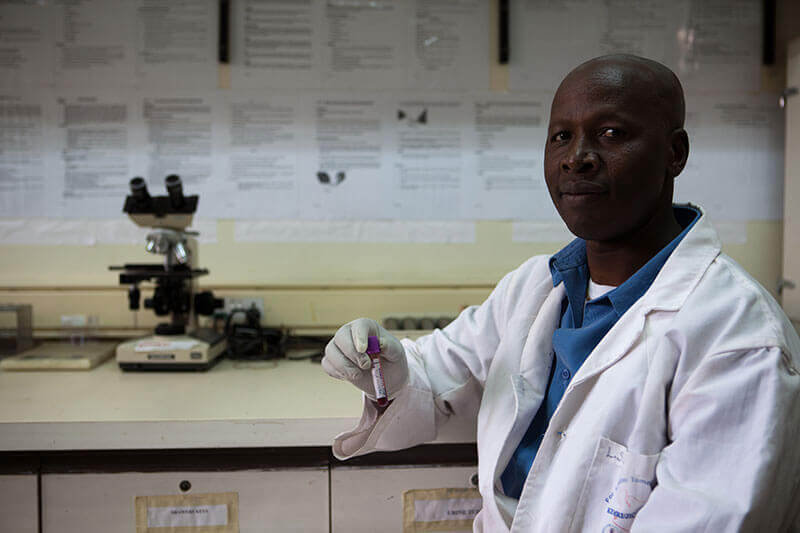
Nairobi, Kenya: Lucas Agura, a medical laboratory technologist who works with the Kenya Medical Research Institute on neglected tropical diseases, conducts research at the KEMRI headquarters laboratory. KEMRI works with GHTC member the Drugs for Neglected Diseases initiative on its efforts to create new treatments for visceral leishmaniasis, a painful and deadly disease that affects half a million people worldwide each year. Photo credit: PATH/Evelyn Hockstein

Kisian, Kenya: Mosquito DNA samples are prepared for testing at the Kenya Medical Research Institute (KEMRI)/Centers for Disease Control and Prevention (CDC) Field Research Station. KEMRI and the CDC have been partnering together for more than 30 years in Kenya. Dr. Pauline Mwinzi, a principal research officer who works with KEMRI/CDC said, “Without the US funding…we wouldn’t be able to move the sophisticated research that we do now.” Photo credit: PATH/Evelyn Hockstein

Siaya, Kenya: Mothers sign consent forms to enroll their children in a study to examine co-infection with malaria and schistosomiasis in the region, run by the Kenya Medical Research Institute/Centers for Disease Control and Prevention partnership. Local residents said they appreciated the study. "One in five children in this area do not survive to their fifth birthday," said Jack Oloo Otieno, the school board chair. "We don't really know the full extent of the problem of schistosomiasis. If all our kids have it—and that's what we suspect—it is doing such harm to them. So we want as much information as possible, and this study will help." Photo credit: PATH/Evelyn Hockstein

Kisian, Kenya: Wilfred Murithi, assistant research officer at the Kenya Medical Research Institute/Centers for Disease Control and Prevention facility in Kisian, prepares a sample to detect tuberculosis (TB) resistance to ritampicin, a TB drug. Resistance to TB drugs has become a severe problem in parts of the world and is increasing. There are an estimated 440,000 cases of multi-drug resistant TB globally, and at least 58 countries have reported cases of extensively drug resistant TB, which can be incurable. New TB drugs are desperately needed. Photo credit: PATH/Evelyn Hockstein
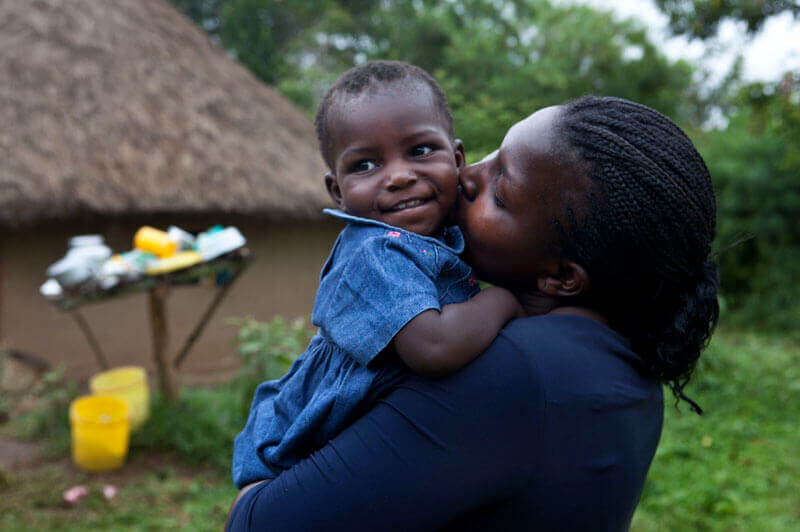
Rawa, Kenya: Sharon Akinyi Ouma holds her daughter Winfrey Juma, who is 16 months old, outside their rural home in western Kenya. Sharon said she was happy to join a tuberculosis vaccine trial run by GHTC member Aeras in collaboration with the Kenya Medical Research Institute/Centers for Disease Control and Prevention. “I think of so many babies, so many children in Africa and around the world, have been helped by vaccines,” she said. “If this vaccine works, that means all those children will be helped by my baby’s participation. That makes me feel very good.” Photo credit: PATH/Evelyn Hockstein
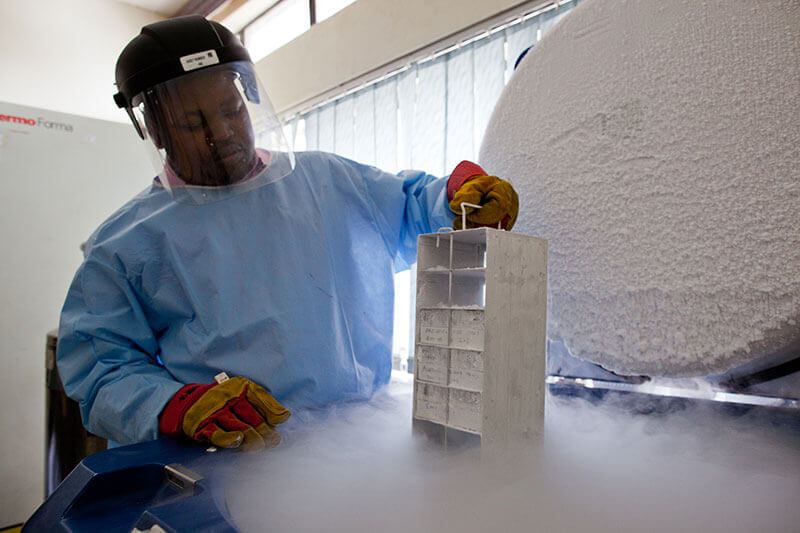
Nairobi, Kenya: Robert Langat, a lab technologist at the Kenya AIDS Vaccine Initiative (KAVI) in Nairobi, checks on vaccine samples stored in deep freeze at the laboratory. The US Agency for International Development supports a partnership KAVI maintains with GHTC member the International AIDS Vaccine Initiative to identify prevention strategies and a response to HIV and AIDS. In 1999, the partnership helped discover broadly neutralizing HIV antibodies—a critical piece of progress developing an AIDS vaccine. Photo credit: PATH/Evelyn Hockstein
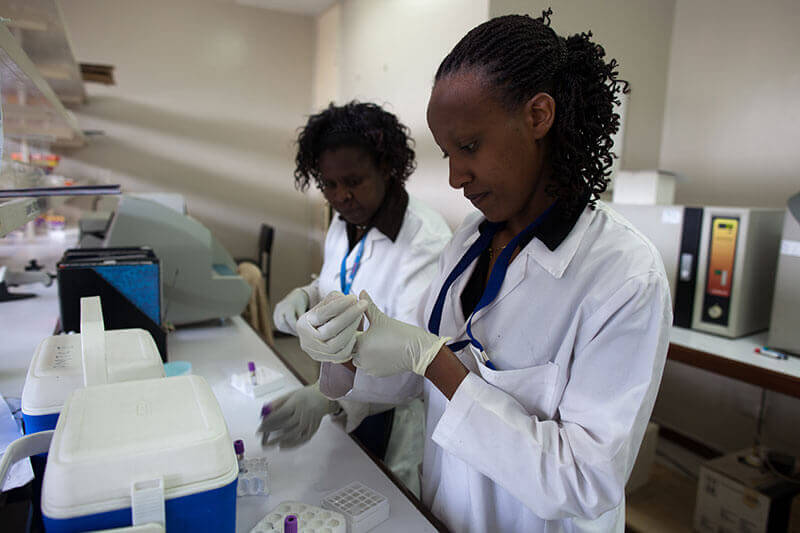
Nairobi, Kenya: Irene Anne Wangari and Agatha Nyawira work with blood samples at the Kenya AIDS Vaccine Initiative (KAVI) lab in Nairobi. Through its partnership with the International AIDS Vaccine Initiative, KAVI has facilitated significant breakthroughs in the research and trained world-class scientists and technicians who will continue to build on the research progress in Kenya. Photo credit: PATH/Evelyn Hockstein